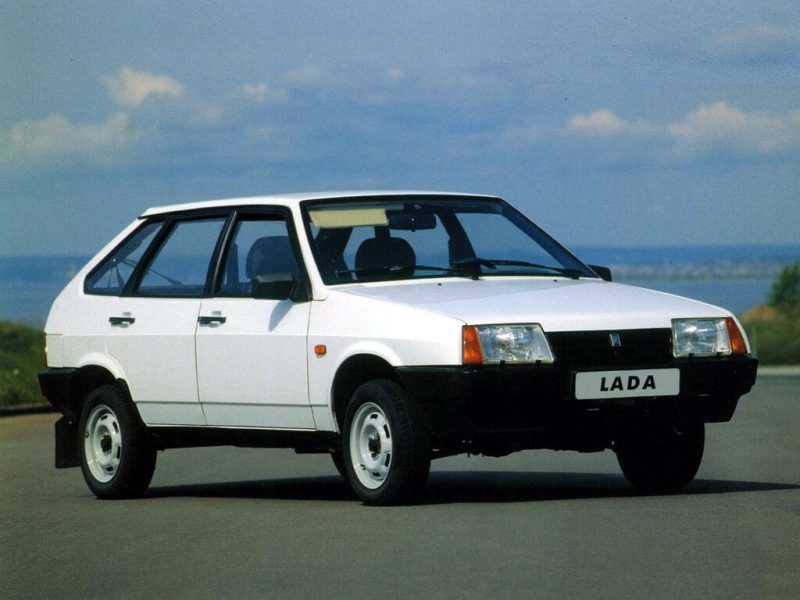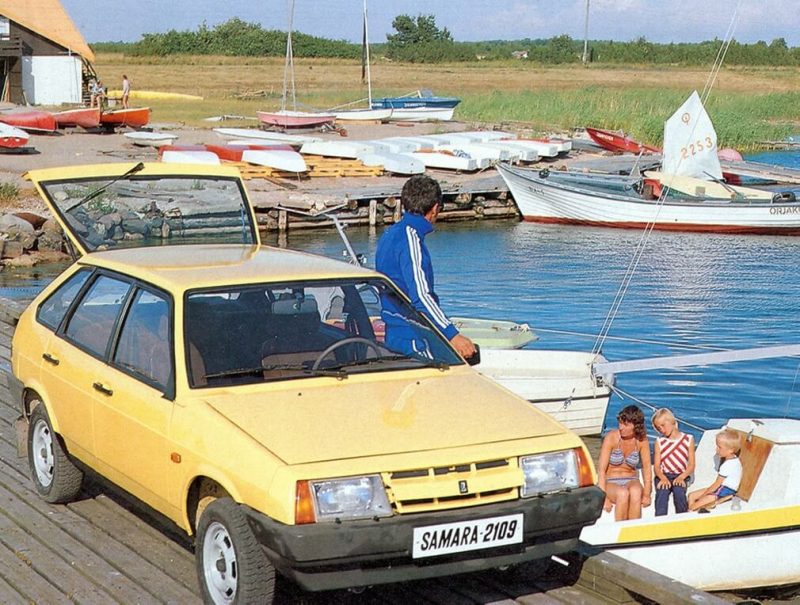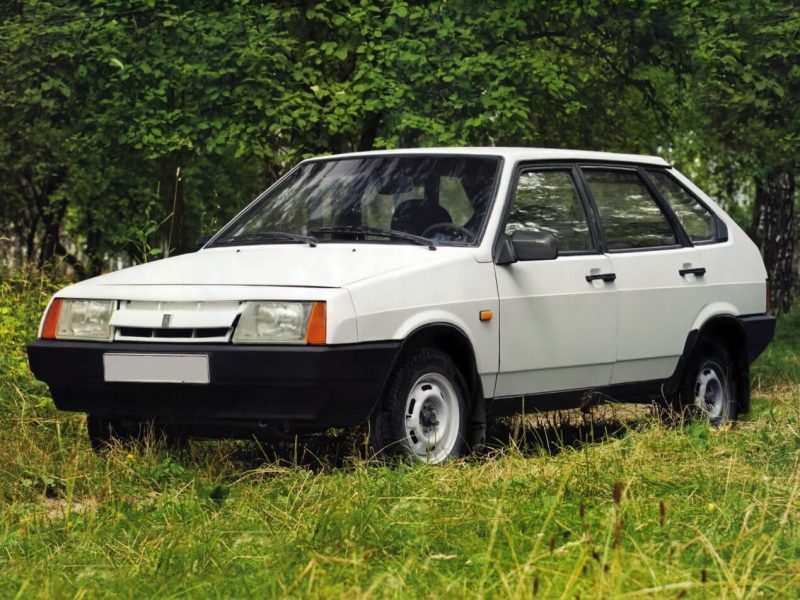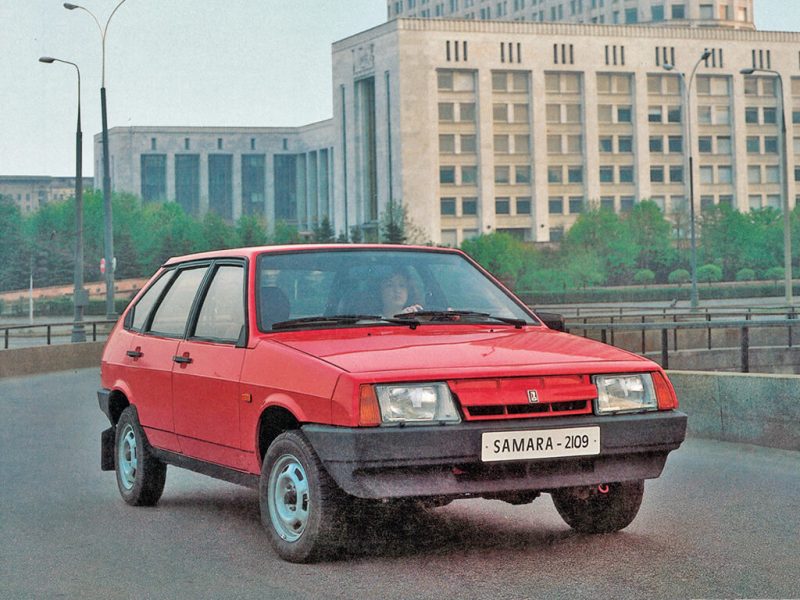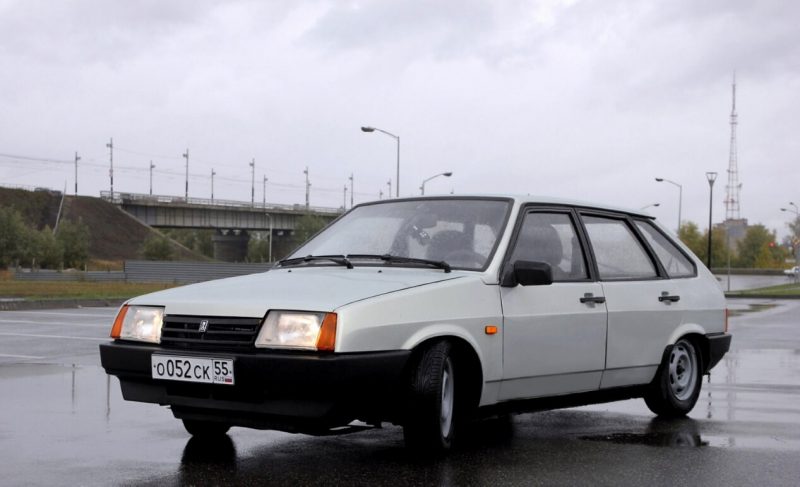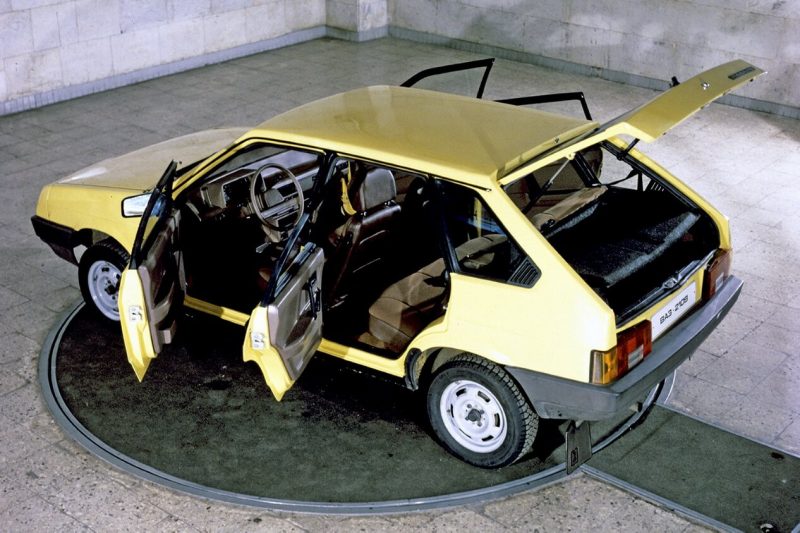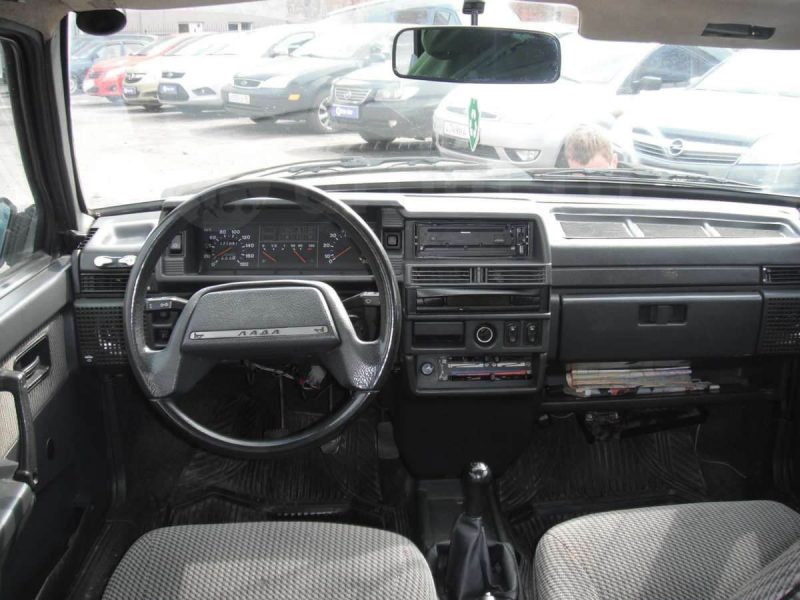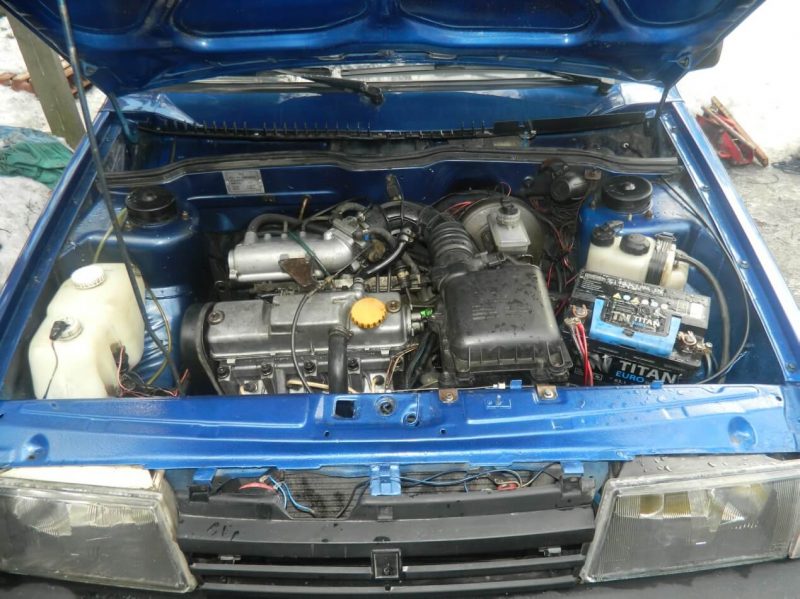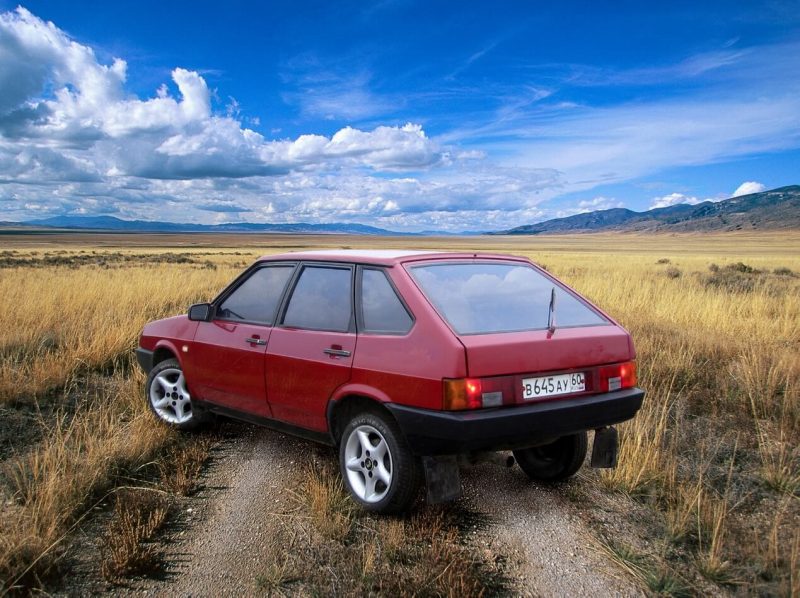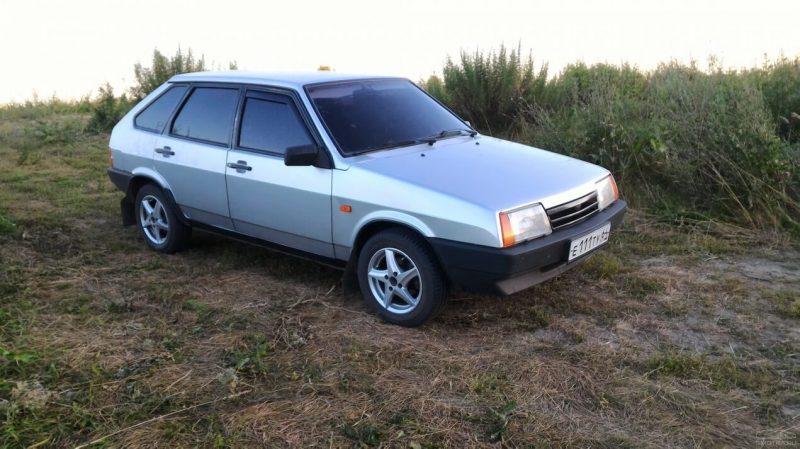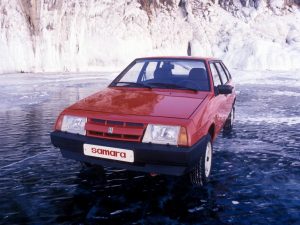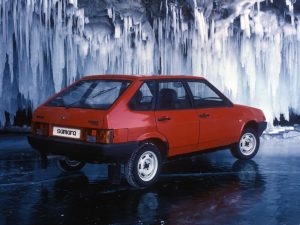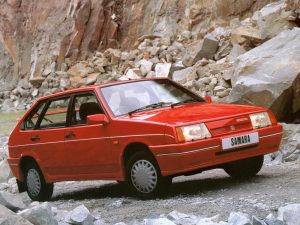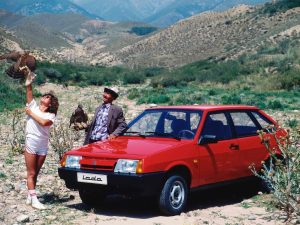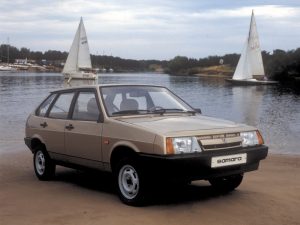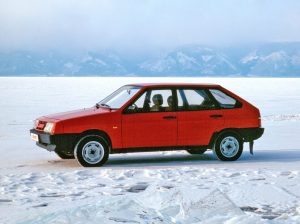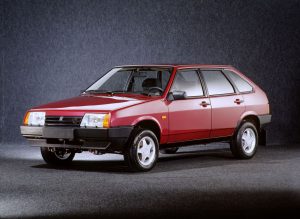VAZ-2109
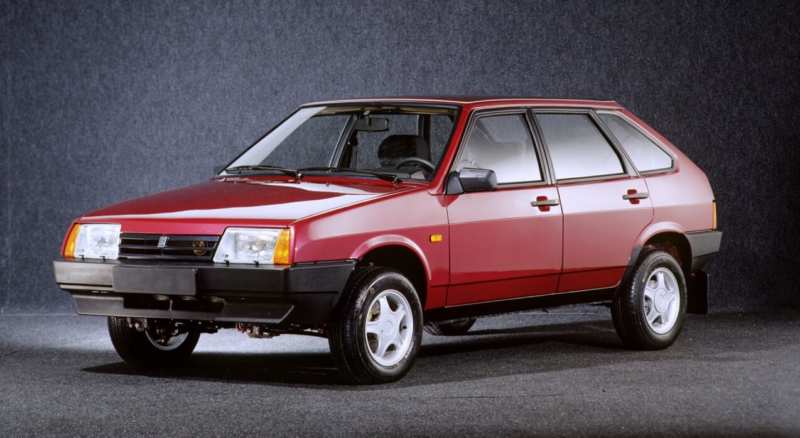
VAZ 2109 (popularly known as the “nine”) is a Soviet small class II front-drive vehicle in the hatchback body. The model was developed and mass-produced at the Volga Automobile Plant since 1987-2004. Since 2004 the car (VAZ-21093) was assembled from car kits at the Ukrainian enterprise “ZAZ” till the end of 2011. This vehicle is also a five-door version of VAZ-2108 in the Lada “Sputnik” models division. In the used car market it is still possible to buy this car today. The whole model range is Lada.
Car history
At the end of the 1980s, AVTOVAZ adopted a resolution to fill the empty niche of comfortable and versatile family models with the VAZ-2109 car. The fact that the Volga Automobile Plant had a debut domestically produced front-drive mass-produced car was a significant event not only for the Volga region, but also for the entire Soviet automotive industry.
It is a little symbolic, but the start of the G8 production fell on a significant event, which was marked in the autumn of 1984 – the 60th anniversary of the automotive industry of the Union of Soviet Socialist Republics. After two years, the original assembly line of the Togliatti car factory produced a pilot batch of 159 models of the “nine”.
The new version of the chisel inherited all the technical innovations from the older model and was able to instantly gain the respect of car lovers. Among all the moments, the most important was the “rational” number of doors. However, despite this, a three-door variant was put into mass production. A logical question arises, why?
Because in a country where personal transport was considered a luxury, and happy owners of cars felt the transport difficulties of their relatives and friends, the standard 3-volume version of the sedan met the needs of drivers to a greater extent. For a long time, all Soviet serial production vehicles were produced in such a bodywork.
The more productive versatile units, which were produced in small quantities, began to be sold only at the end of the 1960s, and they were considered to be in short supply. There was no word about other versions of the bodywork: the directors of automotive companies did not even risk conducting experiments, believing that these programs would not be welcomed “at the top”.
But in the case of the G8, everything turned out in reverse order. In the late 1970s, the whole of Europe was literally overwhelmed with hatchback fashion. The managers of the Togliatti car factory, wishing to comply with modern trends, decided during the design of the new model series to make it, except for the standard sedan and fundamentally fresh for the Soviet industrial turnover 3- and 5-door hatchbacks.
The entry of the new car designed in accordance with the international standards should have strengthened VAZ’s export capacity. The Ministry of Automobile Industry has slightly cooled down the dust of the engineering staff from Togliatti, calculating the impossibility of financing the installation of all 3 versions for the conveyor assembly.
In reality it was possible to release only one line of the factory conveyor for assembling 2 standardized modifications. In the role of those “lucky”, as it turned out, were hatchback, which had a lot of common bodywork elements. In the role of the basic version decided to choose a cheaper three-door car, and a couple of years later, it “came to the rescue” five-door.
The version in the sedan body (VAZ-21099) was introduced into mass production only at the end of 1990. Though this delay in some sense has benefited the enterprise as at occurrence of a sedan the sharp competition with the version hatchback that in any way was not included into plans of a management of the Volga automobile factory would be felt.
Exterior
On the outside, the VAZ-2109 is the evolution of the Soviet machine. Here one can notice a transition to rectangular body lines, which is clearly distinguished by nose headlights, which received the form of a trapeze, as well as a flat-shaped radiator grille and a slightly inclined hood. The indicator lights were placed on the long front wings.
After a while, all the “nine” began to install a hydraulic headlight corrector, and some vehicles had a brush headlamp cleaner. In 1989, a debut restyling of the exterior of the Nine was held in the transition from the small front wings to the longer ones. The most dubious part of the exterior of the G8 and VAZ-2109 was the so-called nose mask.
It was a rather complicated body part of its type, which was adjacent to the hood and wings mounted in front. The combined area of the mask had a beak that protruded forward from the radiator shell. On the sides of such an unusual structure were installed block-lights. Such a pile of elements reduced, so the small elegance of the Soviet machine, and the clear lines of connection of the cladding with the wings looked unpleasant.
They decided to use only a single wing, without any “tricks”, which improved the appearance of the VAZ 2109. After that, a new grille was installed, where there were two longitudinal strips in a large frame. After a while, they began to use a new version consisting of 3 massive strips, devoid of any frame.
The side part has the same straight lines of doors and roofs, wheel arches and average height of ground clearance. “Nine” is very similar to its predecessor, VAZ-2108, which is called “chisel”. The Soviet hatchback has the same nose shape. Unusually large doors and a thick central pillar add to the model “sports features”.
On the “nine” the width of the front doors was reduced from 1,264 to 1,025 millimeters. Thanks to this, the design team was able to introduce the rear doors, which are 885 millimeters wide, into the side of the body. Rectangular rear lights are limited by the line of the luggage compartment lid, which also has a sharp transition angle to the roof.
The fifth door got the position of the rear window with a janitor, and the bumpers, along with the side skirts, decided to make a black plastic (there is a similar bumper in front). The design of VAZ 2109 has a certain swiftness of lines, but it is very far from a sports car.
Here the developers placed great emphasis on more practical sides of the vehicle. When 1987 came, the new model mastered the production of gasoline tanks made of plastic, which are much easier and easier to assemble than the others. VAZ-2108 and VAZ-2109 already had steel and plastic gas tanks.
It is worth admitting that after a while the production of plastic tanks was abandoned, as there were problems with the permeability of gasoline vapor.
Interior
VAZ’s interior is reminiscent of the minimalism of the 1980s. The dashboard and torpedo create an almost right angle. There are only 3 types of panels: “low”, “high” and “europanel”. If we speak for the quality of plastic in the role of finishing, it is far from ideal.
Of course, by installing plastic in the interior of the “nine”, it was possible to reduce the weight of the car, but on the other hand, deprived VAZ cars of the luxury that is remembered Zhiguli classic unit. If you look at it differently, the ergonomic level is not bad, so it is not necessary to be distracted from driving on the road.
In part, this was achieved through the compact layout of the controls. Inside the steering wheel, there is one curved transverse element with an audible alarm button. No airbags are provided by the factory. In general, the interior of VAZ-2109 is very practical with claims to the level of comfort.
Despite the laconic “low” instrument “board”, it is quite comfortable. Although many people liked the high panel 2109. The front seats were fitted with headrests. In addition, the front seats have height-adjustable upper belt mounting points.
The elastic seats have a good body fixation. But a taller driver will lack the choice of adjustment of his seat in the longitudinal plane. The rear sofa, although designed for three passengers, can comfortably accommodate only two people.
Do not forget that their height should not be more than 175 cm. The volume of a luggage compartment at the Soviet hatchback makes modest enough 270 litres of useful space (more practical coplatformnik has received already 400 litres).
Specifications
Engine
In the role of engines, domestic engineers used various power units with different volume and capacity. The very first models of Soviet production were equipped with a 1.1-liter engine.
The basic version of the “nine” was equipped with a 4-stroke, eight-valve, four-cylinder power unit “eight”, the working volume of which was 1,295 cubic centimeters. Such “engine” developed 64 horsepower at 5 600 rpm. Peak rotational forces (94 Nm) gained after 3,400 rpm.
The speed limit was 148 kilometers per hour. The first hundred was reached in 16 seconds. Such a modest engine consumed about 8.7 liters for every hundred kilometers and 5.7 liters in the city mode.
Variant 21093 already has a carburetor engine 21083. It received a volume of 1,499 cubic centimeters. Maximum power of 69 “horses” is achieved after a set of 5 600 revolutions per minute. The maximum torque is 106.4 Nm at 3,500 rpm. The Soviet hatchback can be accelerated up to 155 kilometers per hour, and the first hundred is gained in 15 seconds.
It is logical to conclude that with the increase in power, the consumption of gasoline increases. Thus, in the city this indicator is kept at the level of 8.6 liters for each hundred, and on the road it falls to the value of 5.9 liters for every 100 kilometers. The VAZ 2109 carburetor was called Solex and was a new, more economical model.
The most compact is the 1.1-liter engine, which develops only 54 “horses”, which were available at 5,600 revolutions per minute. The maximum torque of 79 Nm is available at 3,600 rpm. The maximum speed does not exceed 155 kilometers per hour, and fuel consumption in the combined mode is about 6.7 liters for every 100 kilometers.
In addition, later began to produce the engine VAZ 2109 injector. It received an index of 211180 and was installed in the VAZ-21093i and 1.5 liters of volume. Such a power unit is capable of producing 72 horsepower, available at 5,600 revolutions per minute.
Peak torque of 118 Nm is available at 2,800 rpm. For every 100 kilometers, the fuel consumption of VAZ 2109 is 8.0 liters in the city limits and 5.8 liters on the highway.
In the injector version of the engine, the injectors often fail, but they can be repaired by themselves or given to specialists for repair. This video shows how to clean and rinse the nozzles by yourself.
Transmission
KP for hatchback was initially at four speeds, but since 1989, the engineering staff, decided to introduce a five-stage box on the “mechanics”. This transmission has a single disc simple clutch, cylindrical main gear, bevel differential and drive shafts with SHRUS.
There is also an integrated central spring and cable drive. The box VAZ 2109 is not very complicated, so some people take it up for repair even by themselves.
The device of the Soviet front-drive hatchback has an interesting feature. In order to switch on the rear speed, it is necessary to direct the control lever to the left and forward. Almost the same principle is used to switch on the first speed.
Running gear
We decided to install a fully independent suspension system like McPherson, which is also called “floating candle”. At the back they installed a semi-independent suspension with a cross beam, which works on torsion.
In its structure, such a beam is similar to the numerous front-wheel drive machines of previous years. Hydraulic shock absorbers, cylindrical springs, as well as lower transverse levers with stretch marks and stabilizer of transverse stability are used.
As the braking device of the front-drive machine, disc brakes with movable front calipers and drum mechanisms at the rear are used. The distance between the disc and the pad is set automatically. The braking drive of the machine is hydraulically operated.
Security
The dashboard takes a hard hit. The controls, together with the headrests and other elements, were made of soft plastic. The factory has sun visors to prevent the driver from being blinded by the cladding. Auxiliary sun protection is provided by easily adjusting the placement of the internal mirror.
The factory has a system of intermoving, swallowing elements combined with a one-way sliding carriage, which reduces the collision energy against the steering wheel by means of an adjustable delay. An aspherical concave exterior mirror increases the viewing angle.
Estimating the distance to the next back of the going machine is only symbolic, because there is a small distortion. Designers of VAZ 2109 have provided seat belts not only on the front seats, but also for the rear passengers. Such an element can save more than one life!
The car has received three-point safety belts, where it is equipped with an automatically twisting device and a lock, which provides full independence of activity in a quiet high-speed mode, at the same time tightly and with tension wrapped around the torso.
During high acceleration or tilting of the machine in all directions, the belt is quickly locked. This option is not tested with special torso movements.
Crash test
Price and equipment
The special level of comfort of the “nine” did not differ, so there is nothing to describe to a greater extent. Even then, it was in many ways superior to foreign cars. But the domestic hatchback was characterized by maintainability and availability of necessary details.
The steering wheel was without a hydraulic booster, so physically it was necessary to work well. There was a standard stove, simple steering wheel and standard seats with seat belts installed.
It was possible to adjust the exterior mirrors from the interior by means of a mechanical lever. To date, VAZ 2109 can only be purchased on the secondary market. Usually the price list for this car is not high, so you can buy a car on the go from $939.
Reviews from the owners
Despite the rather outdated model, appearance and small dynamics, as well as low level of comfort, many motorists speak quite well of the “chisel”. Simplicity and inexpensive service makes us happy. Details can be purchased for the best means, in addition to the flea market. You can repair it yourself. The car is ideal for tuning.
The unpretentiousness of the car is known to many people. Positive reviews include quite acceptable fuel consumption, at the level of 8-10 liters in the combined cycle. Especially dacha owners can be pleased with a good height of the ground clearance, which allows to pass confidently on unevenness and not to be afraid of bumpy road.
It is bad that there is no hydraulic power steering, so you have to put physical effort to drive the machine, especially standing still. Only the front row of seats can comfortably accommodate people inside. For the second row, there is not much space left in the legs and above the head. The three of us do not sit comfortably, and the transmission tunnel in the center of the car obviously causes discomfort.
According to the feedback of VAZ 2109 owners, the stove at the hatchback works strangely, at first the salon is filled with cold air, and only then begins to arrive warm. The quality of the interior is very mediocre, plastic is cheap, crickets can be heard everywhere, there are large gaps between the panels. The power unit often lacks power, so you have to spin the motor up to 4,000 revolutions per minute.
If desired, an air conditioner could be installed, but the engine is very weak, so the question disappears. Safety is also far from ideal, so if there is a serious accident, then at best you can get rid of injuries. Only recently, domestic cars began to be equipped with many systems providing safety, but VAZ 2109 this, of course, did not affect in any way.
The pros and cons
Pluses cars
- Inexpensive car made in the Soviet Union;
- The front drive can certainly be considered an advantage;
- Acceptable ground clearance height;
- Not bad dynamism, high speed, pleasant controllability and sufficient stability on different surfaces;
- Heating and ventilation cope well with their tasks and supply air to several points at once, which improves the uniform distribution of heat air in the cabin;
- Acceptable fuel consumption;
- Ideal for tuning;
- Availability of spare parts and good maintainability.
Cons of a car
- Metal corrosion;
- Appearances are clearly on the amateur;
- A small resource of some details;
- Intermediate noise insulation of the salon;
- Low equipment;
- Very little free space, especially for rear passengers;
- Small luggage compartment;
- Bad passability;
- Poor quality salon;
- Low level of security;
- The power pack clearly lacks power.
Summing up
After getting acquainted with the Soviet hatchback VAZ 2109, there are still contradictory feelings. On the one hand, it is the car which has safely stepped forward in the future, in fact earlier there were only back-drive models, but on the other hand, quality of the Soviet car industry is limping on many parameters and essentially concedes to foreign cars.
However, among other things, the car is ideal for beginners who are only learning to drive, as the car can be purchased for a “grounded” price list. In addition, spare parts for hatchback can be found everywhere, and they are not so expensive, which is an obvious plus. You can make repairs yourself in your garage, which also simplifies a lot.
The car looks pretty controversial, so it has both supporters and opponents of the exterior. It is clear that there is not much free space inside, especially for backseat passengers, and the volume of luggage compartment clearly wants the best.
Also, the quality of materials and plastic used for finishing is very limping, everywhere you can hear “crickets” and visible gaps between the panels. The seats themselves are not the most comfortable, so during long journeys, fatigue may appear. Based on crash tests, the hatchback is a dangerous car.
The power of the car is obviously lacking, so you have to almost always unscrew the engine VAZ 2109. But do not forget that the car is already many years old and in its years, it was very popular in the Soviet Union, as there were queues behind it.
Yes, the model did not receive air conditioning, hydraulic power steering and so on, but tuning fans can upgrade and create a car according to their preferences, making a unique vehicle out of the car. “Zubilo will be forever remembered and in the heart of those who owned it, despite the frequent breakdowns and low level of comfort.
We advise you to read the article: AutoVAZ history – LADA cars


